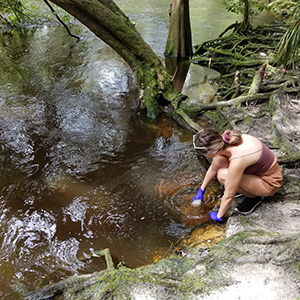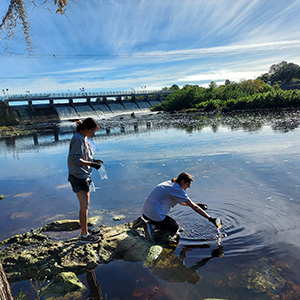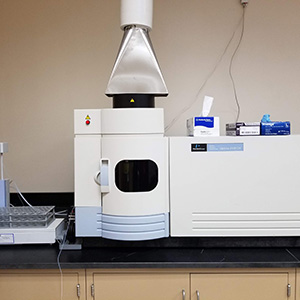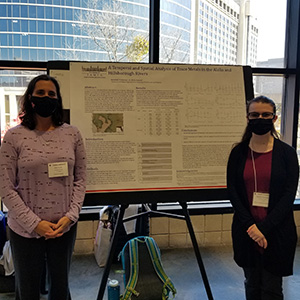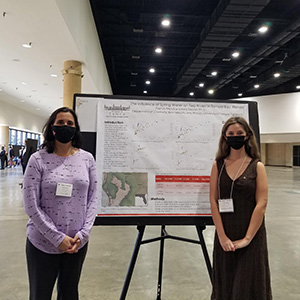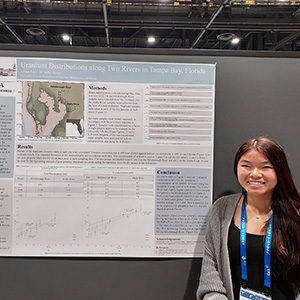
Kelly Deister
Assistant Professor
Office: TECH 674C
Education and Training:
- 2000 Fairleigh Dickinson University, B.S. in Chemistry and Marine Biology
- 2006 University of South Florida, Ph.D. in Chemical Oceanography with Dr. Robert Byrne
Research Interests:
Estuaries are bodies of water where fresh water from the rivers mixes with saltwater from the ocean. The estuarine water can also be influenced by submarine groundwater via springs that discharge directly into the estuarine system. These transition zones between the land and the sea create dynamic regions that are economically and scientifically important. Predominantly known for their biological diversity, estuaries also display considerable chemical fluctuations. Tampa Bay, the largest estuary in Florida, is designated as an estuary of national significance. The University of Tampa is located directly on the Hillsborough River, which is one of the primary rivers feeding into Tampa Bay. This makes UT an ideal location to study estuarine chemistry.
The research focus of my lab is on the marine chemistry of Tampa Bay and the associated rivers and springs. My primary interest is in chemical contaminant distributions and the processes that affect them, which has led to predominantly field-based studies. Research projects have studied inorganic elements such as trace metals and specifically uranium, and organic molecules such as pharmaceuticals and personal care products.
Please see Assistant Professor Deister for information on specific research projects.
